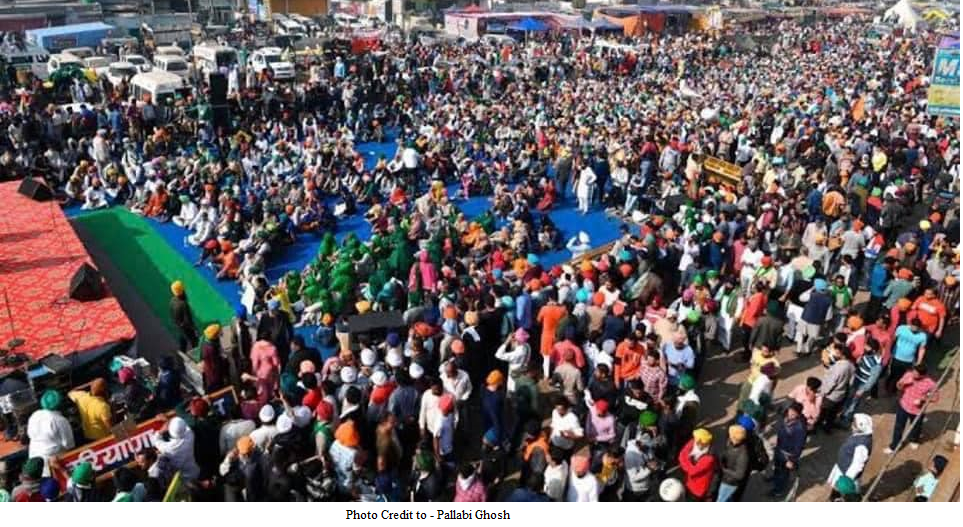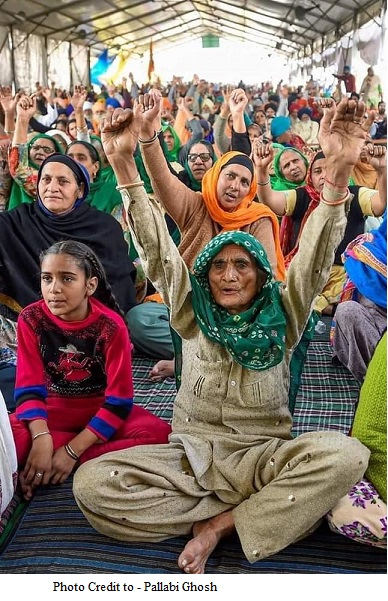INDIA: The Bogey of Public Inconvenience to Snatch the Right To Protest
 Democracies across the world are defined by the virtue of the right to protest. Yet, in India, that fancies itself as the largest democracy of the world, the governments are seen to be chipping off that very right by raising the bogey of public inconvenience. They have mobilised people, mostly their party members, to even physically attack such protests including in one case by a gun wielding man firing at peaceful and unarmed protestors.
Democracies across the world are defined by the virtue of the right to protest. Yet, in India, that fancies itself as the largest democracy of the world, the governments are seen to be chipping off that very right by raising the bogey of public inconvenience. They have mobilised people, mostly their party members, to even physically attack such protests including in one case by a gun wielding man firing at peaceful and unarmed protestors.
They started doing that with Shaheen Bagh protests against the controversial Citizenship Amendment Act and the National Registry of Citizenship- both seen as an attempt to disenfranchise the minorities by many. The government ably assisted by most of the news channels, which have a habit of supporting everything that the government says- and at times fitting imaginary nano-chips in the new currency notes- vilified the protestors and cracked down on them.
Though, the Supreme Court of India, often the last recourse of the citizenry to safeguard constitutional rights has not followed its Shaheen Bagh misadventure with farmers yet, it seemed to collude with the attempts through both- acts of omission and commission. In doing so, it reversed its own orders by bigger benches to break Shaheen Bagh protests. Further, the committee it formed to break the deadlock between the government of India and the farmers demanding total repeal of the new farm laws they think would lead to corporate loot of their lands with every single member supporting the new laws made its stand amply clear.
That said, India’s winters of discontent for two years in a row now hint at a deepening malaise of attacks on the right to protest. This year it is about farmers who are picketing New Delhi, the national capital for over 2 months now at many of its borders. The government of India, and many of the states as well, have gone all out to quell the protests including with high handed measures that could have led to calamities. Bhartiya Janata Party that is ruling Haryana started the crackdown with ill thought attack including with water canons and tear gas on farmers coming to Delhi from Punjab on a narrow bridge at the Shambhu Border. It is merely by chance that it did not lead to a stampede that could have killed many.
Yet, far more sinister than the physical attacks are the attempts to snatch the very right to protest. Despite many noticing that, the channels behaving like Radio Rwanda did succeed in hiding one of the worst assaults on right to protest duding Shaheen Bagh when a bench of Supreme Court of India reversed an order of a bigger bench in In Himat Lal K Shah vs Commissioner of Police, 1973 AIR 87. The court had then observed that even though citizens cannot form unions and associations “in whatever place they please, nevertheless the State cannot by law abridge or take away the right of assembly by prohibiting assembly on every public street or public place.”
In a rather strange reading of the judgement, a 3-judge bench headed by Justice Sanjay Kishan Kaul said “We have to make it unequivocally clear that public ways and public spaces cannot be occupied in such a manner and that too indefinitely. Democracy and dissent go hand in hand, but then the demonstrations expressing dissent have to be in designated places alone.”
To begin with, a three-judge bench reversing a 5-judge bench’s order is not legally right. Then reading it in exact opposite words and undoing the right to protest it granted to the citizens was plain unthinkable! The judgement said that the “state cannot by law abridge or take away the right of assembly by prohibiting assembly on every public street or public place”and not what the three judge bench read it as!
The judgement also undermined another judgement of the same court in the case S. Rangarajan v. Jagjivan Ram (1989) 2 SCC 574. The Supreme Court had then noted that, “the problem of defining the area of freedom of expression when it appears to conflict with the various social interests enumerated under Article 19(2) may briefly be touched upon here. There does indeed have to be a compromise between the interest of freedom of expression and special interests. But we cannot simply balance the two interests as if they are of equal weight.”
“Our commitment of freedom of expression demands that it cannot be suppressed unless the situations created by allowing the freedom are pressing and the community interest is endangered. The anticipated danger should not be remote, conjectural or far-fetched. It should have proximate and direct nexus with the expression. The expression of thought should be intrinsically dangerous to the public interest. In other words, the expression should be inseparably locked up with the action contemplated like the equivalent of a “spark in a powder keg”.
In that judgement too the Court had clearly noted that unless the protests endanger the community interest in proximate and direct terms, they cannot be broken up. The right to protest is also enshrined in the international law and United Nation as covenants which India is a party to. More recently, Joint report of the Special Rapporteur on the rights to freedom of peaceful assembly and of association and the Special Rapporteur on extrajudicial, summary or arbitrary executions on the proper management of assemblies underscored this right in 2016 noting that
“To this end, blanket bans, including bans on the exercise of the right entirely or on any exercise of the right in specific places or at particular times, are intrinsically disproportionate, because they preclude consideration of the specific circumstances of each proposed assembly.”
Much bigger than all this, though, is the fact that protestors are part of the public too. They are equal citizens of India with all their constitutional rights, including the right to protest. Mobilizing members of political outfits to attack them, vilifying them as anti-nationals is an ominous sign in a democracy.
About the Author:
Mr. Avinash Pandey, alias Samar is Programme Coordinator, Right to Food Programme, AHRC. He can be contacted at avinash.pandey@ahrc.asia.



